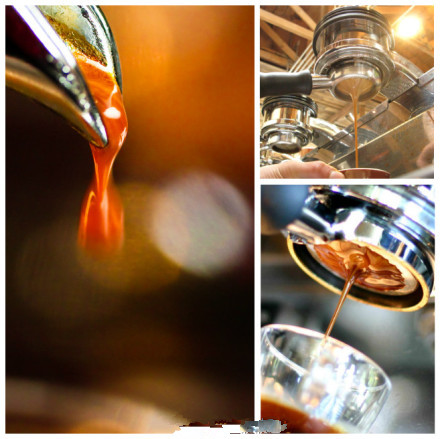Water washing method for the primary processing of coffee beans
Washing is the most popular and widely used green bean treatment method, most of the fine coffee beans will choose washing method. In South America, all countries except Brazil choose the washing method for raw beans.

Water washing method is one of the most scientific and technological processing methods in all processing methods, which ensures uniform and stable quality of coffee beans through multiple screening. First, still put the beans into the tank, then remove the floating beans, and put the beans that sink to the bottom of the tank into the pulper. The pulper not only removes the pulp, but more importantly it cleverly uses pressure to completely filter out the immature beans. The beans are then put into a fermentation tank for the most important washing fermentation treatment. The purpose of washing fermentation is to remove pectin from the beans, which takes about 16 to 32 hours to ferment. In the fermentation process will also produce a lot of acidic substances, the appropriate acetic acid can not only make coffee beans less moldy, but also increase the flavor of coffee. But overfermented beans can also be tarnished and turn into poor-quality coffee.
The water content of coffee beans washed by water is generally about 16%. The beans have a good appearance, and relatively less miscellaneous taste, clear taste and bright fruit acid taste.
Important Notice :
前街咖啡 FrontStreet Coffee has moved to new addredd:
FrontStreet Coffee Address: 315,Donghua East Road,GuangZhou
Tel:020 38364473
- Prev

The method of half-sun treatment for the primary processing of coffee beans
As the early Brazilian coffee was all treated by traditional solarization, the overall quality of Brazilian coffee was unstable and could only wander in the middle and lower grade. In order to improve the quality of coffee in Brazil, the Brazilian government has invented the half-sun method and vigorously promoted it. At present, almost all the high-quality coffee beans in Brazil use the half-sun method to treat raw beans, which can be said to be a successful half-sun method.
- Next

The method of taking beans and sun treatment in the primary processing of coffee beans
Tanning is a traditional method for the initial processing of coffee beans, and at present, almost all coffee-growing countries such as Ethiopia and Yemen still use solarization to treat raw beans. Sun treatment will first identify sunken beans in the sink, that is, ripe or half-ripe beans are spread in the drying farm for natural drying. The specific time depends on the local climatic conditions, which usually takes two to four weeks.
Related
- Beginners will see the "Coffee pull flower" guide!
- What is the difference between ice blog purified milk and ordinary milk coffee?
- Why is the Philippines the largest producer of crops in Liberia?
- For coffee extraction, should the fine powder be retained?
- How does extracted espresso fill pressed powder? How much strength does it take to press the powder?
- How to make jasmine cold extract coffee? Is the jasmine + latte good?
- Will this little toy really make the coffee taste better? How does Lily Drip affect coffee extraction?
- Will the action of slapping the filter cup also affect coffee extraction?
- What's the difference between powder-to-water ratio and powder-to-liquid ratio?
- What is the Ethiopian local species? What does it have to do with Heirloom native species?

